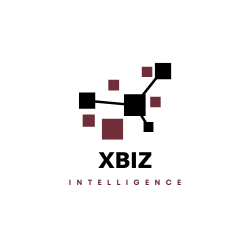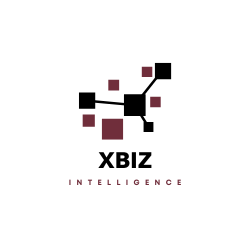

XbizIntelligence News
Your Trusted Source for the lastest Technology & Data News

🎥 Watch Now on YouTube
Cloud Infrastructure 2.0: The Next Evolution of Computing
Cloud Infrastructure 2.0: The Next Evolution of Computing
Cloud computing has always been about scalability, flexibility, and cost efficiency — but we’ve reached a new frontier. Cloud Infrastructure 2.0 is emerging as a convergence of technologies that bring intelligence, automation, and agility to every layer of computing.
This evolution transforms cloud platforms from passive environments into autonomous digital ecosystems capable of optimizing themselves.
Executive Summary
The next generation of cloud computing, often called Cloud 2.0, integrates AI orchestration, edge computing, and multi-cloud automation to create faster, smarter, and more secure infrastructure environments.
Organizations adopting Cloud 2.0 are unlocking new levels of performance, cost control, and innovation.
Content Guide
- Introduction
- AI-Driven Cloud Optimization
- The Rise of Multi-Cloud and Hybrid Strategies
- Edge Computing Meets Cloud
- Security and Compliance in Cloud 2.0
- Case Study: Netflix and Cloud Automation
- Future Outlook
- Conclusion
- CTA: Stay Ahead with XBI Tech News
- Next Reads
Introduction
In the early 2010s, cloud computing revolutionized IT by shifting workloads away from on-premise servers. Now, Cloud 2.0 builds upon this foundation, adding layers of automation, intelligence, and decentralization.
The next wave of cloud technology integrates AI, machine learning (ML), edge computing, and multi-cloud orchestration to achieve real-time adaptability.
According to Gartner, over 70% of enterprises will adopt multi-cloud or hybrid models by 2026. The driving forces are flexibility, performance optimization, and resilience against vendor lock-in.
AI-Driven Cloud Optimization
Artificial intelligence is now embedded directly into infrastructure layers. AI-driven orchestration tools predict workload surges, dynamically allocate resources, and identify bottlenecks.
For example:
- Google Cloud’s Active Assist uses AI to recommend cost optimizations.
- AWS Compute Optimizer analyzes resource utilization and suggests scaling strategies.
This means enterprises can reduce cloud waste by up to 40% while improving performance metrics.
AI is also reshaping how DevOps teams operate. Predictive analytics can now automate incident response, perform anomaly detection, and even self-heal failing services.
“AI-driven cloud operations mark the biggest leap forward in IT efficiency since virtualization.” — MIT Technology Review
Internal Link: The Rise of Low-Code/No-Code Development
External Link: MIT Technology Review on AI Infrastructure
The Rise of Multi-Cloud and Hybrid Strategies
The old single-vendor model is fading. Enterprises now embrace multi-cloud and hybrid strategies, blending private and public resources across platforms like AWS, Azure, and Google Cloud.
This approach enhances data sovereignty, cost control, and disaster recovery capabilities. Cloud management platforms such as VMware Cloud Foundation and HashiCorp Terraform provide unified orchestration across disparate clouds.
<table> <thead> <tr> <th>Cloud Type</th> <th>Key Benefits</th> <th>Common Providers</th> </tr> </thead> <tbody> <tr> <td>Public Cloud</td> <td>Scalability, Pay-as-you-go</td> <td>AWS, Azure, GCP</td> </tr> <tr> <td>Private Cloud</td> <td>Security, Compliance</td> <td>VMware, OpenStack</td> </tr> <tr> <td>Hybrid Cloud</td> <td>Flexibility, Control</td> <td>Red Hat, Dell, Oracle</td> </tr> </tbody> </table>By 2025, multi-cloud spending is projected to exceed $400 billion globally (IDC Report).
Internal Link: Open-Source Software Trends in 2025
External Link: IDC Multi-Cloud Research
Edge Computing Meets Cloud
The growing demand for low latency and IoT integration has made edge computing a central pillar of Cloud 2.0.
Instead of sending all data to central cloud servers, processing occurs closer to users — in edge nodes, devices, or regional data centers. This reduces bandwidth usage and enhances response times.
A notable example: Autonomous vehicles rely on edge processing for real-time navigation, while still connecting to the cloud for updates and analytics.
The result:
- 50% faster response times for mission-critical applications
- Improved resilience during connectivity outages
External Link: Edge Computing Overview — Microsoft Azure
Security and Compliance in Cloud 2.0
Security models are evolving alongside infrastructure. With distributed systems and multiple cloud vendors, zero-trust architectures and AI-driven threat detection are becoming standard.
Modern tools use ML to detect anomalies in traffic, isolate compromised workloads, and automatically rotate credentials.
Compliance frameworks such as ISO 27001, SOC 2, and FedRAMP are now being built into CI/CD pipelines to ensure continuous compliance.
Case Study: Netflix and Cloud Automation
Netflix has long been a cloud pioneer. In 2025, its new AI-driven resilience framework uses predictive modeling to detect potential regional failures and preemptively shift workloads across multiple providers.
This minimizes downtime and allows Netflix to deliver consistent performance even during peak loads (e.g., major series releases).
The case illustrates how predictive infrastructure is redefining cloud management.
Future Outlook
Cloud Infrastructure 2.0 is not a distant vision — it’s unfolding now.
The next five years will see increased fusion between AI, networking, and storage layers. Serverless computing will expand, while developers focus on business logic instead of provisioning.
Emerging trends:
- Cloud sustainability (carbon-aware orchestration)
- Federated AI across multiple clouds
- Quantum-safe encryption
Conclusion
Cloud Infrastructure 2.0 signals the maturity of cloud computing. With AI at its core, this era promises not just scalability — but intelligence, adaptability, and autonomy.
Organizations that embrace these shifts early will lead the next decade of digital innovation.
CTA: Stay Ahead with XBI Tech News
Stay informed on Cloud 2.0, AI automation, and digital transformation.
Subscribe for alerts on the latest tech news and get weekly insights from Xpert Business Intelligence.
Next Reads
FAQs About SEO in 2025
What is the #1 SEO ranking factor?
Answer: Helpful, authoritative content that satisfies user intent.
Is link building still important?
Answer: Yes, but relevance and quality matter more than sheer quantity.
How often should I update content?
Answer: At least every 6–12 months to keep it accurate and competitive.
ADVERTISEMENT
Most Read
Stay in the Loop
Get the latest tech and data stories, events, and updates straight to your inbox.


Join the conversation